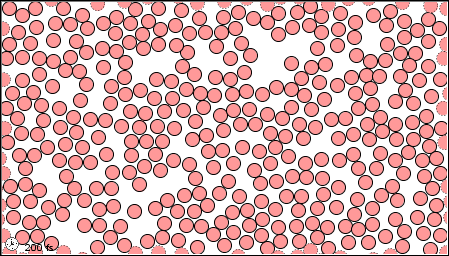6.1: Sólidos, Líquidos y Gases
- Page ID
- 72361
- Describir los diferentes estados de la materia.
- Describir los diferentes cambios que ocurren entre sólidos, líquidos y gases.
La materia puede existir en uno de varios estados diferentes, incluyendo un estado gaseoso, líquido o sólido. La cantidad de energía en las moléculas de la materia determina el estado de la materia.
- Un gas es un estado de materia en el que los átomos o moléculas tienen suficiente energía para moverse libremente. Las moléculas entran en contacto entre sí sólo cuando chocan aleatoriamente.
- Un líquido es un estado de materia en el que átomos o moléculas están constantemente en contacto pero tienen suficiente energía para mantener posiciones cambiantes entre sí.
- Un sólido es un estado de materia en el que los átomos o moléculas no tienen suficiente energía para moverse. Están constantemente en contacto y en posiciones fijas entre sí.

En la Figura\(\PageIndex{2}\), las tres fases se muestran a nivel submicroscópico en animaciones. Observe cómo el movimiento y la libertad de las moléculas aumentan constantemente a medida que las fuerzas atractivas disminuyen de la fase sólida a la líquida y la fase gaseosa



GAS LÍQUIDO SÓLIDO
Figura\(\PageIndex{2}\) Animación de las tres fases a nivel submicroscópico.
El cambio de sólido a líquido generalmente no cambia significativamente el volumen de una sustancia. Sin embargo, el cambio de un líquido a un gas aumenta significativamente el volumen de una sustancia, en un factor de 1,000 o más. Figuras
Contributors and Attributions
CK-12 Foundation by Sharon Bewick, Richard Parsons, Therese Forsythe, Shonna Robinson, and Jean Dupon.
- Libretexts: The Basics of GOB (Ball et.al.)
Henry Agnew (UC Davis)

